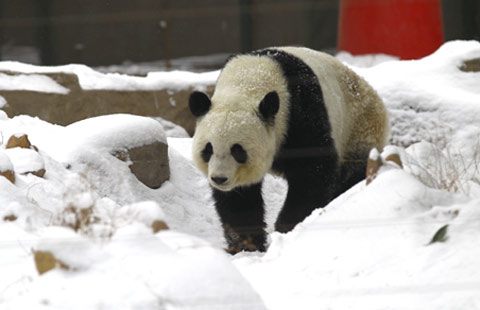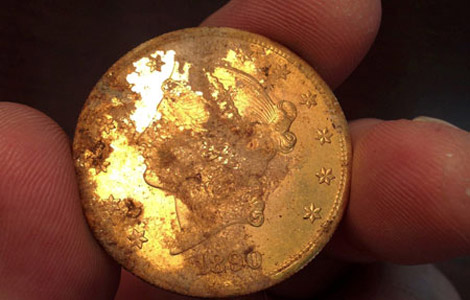History book a new high in China scholarship
Updated: 2013-12-12 11:49
By Chris Davis (China Daily USA)
|
||||||||
It weighs more than five pounds, has 1.5 million words broken into 14 book-length parts in 76 chapters and arranged in two-columned pages and type that, as one reviewer puts it, "if one is no longer young, requires fresh eyes after only a few minutes of reading".
There are books and there are tomes and there are monumental tomes, and then there is the newly revised edition of Endymion Wilkinson's Chinese History: A New Manual, just published by Harvard University Press (cost: $48).
Wilkinson, who studied Chinese at Cambridge in the 1960s and served as the European Union's ambassador to Beijing from 1994 to 2001, has compiled an exhaustive assemblage of facts and analysis, down to an almost obsessive level of minutiae and cross referencing, the kind of book that scholars love.
Where, for example, did chopsticks come from? "The first ones used for placing food in the mouth may be the bronze pair excavated from an Anhui site dating from the late Spring and Autumn Period (770-476 BC)" but, he adds, "many centuries were to go by before they replaced the use of hands at the table (and the forefinger and index finger is still called shizhi, the eating or tasting finger)."
In Chapter 18, he traces the five stages of the evolution of Chinese manuscript and book production: From manuscripts written on bamboo strips and wooden tablets in the Shang (1675 BC) and later Han dynasties (220 AD), manuscripts written on silk (Warring States to Han), paper (Later Han to Five Dynasties), woodblock printing (7th to 19th centuries) and Western printing machinery in the late 19th century to now.
Regarding the printing advancements, he somewhat wryly observes, "A much handier and a cheaper medium for keeping records than shells, bones, jade, bronze or stone was bamboo or wood" which historically were "a longer-serving medium for writing than paper".
The section on Chinese astronomy is fascinating. "Chinese records of eclipses, comets, and other celestial phenomena are more complete and continuous than those found in any other culture. There are many such records on the oracle bones," he writes and then details scholarly attempts to match the events with existing records.

Of the oracle bones themselves, he explains that they were discovered in the late 19th century by peasants digging in the fields around Anyang, who did not realize their value until an antiques dealer from Weixian spotted them in a Shandong neighborhood. The writing carved into the bones was some of the most ancient Chinese script ever seen and after years of study, the bones confirmed the names of the last nine Shang rulers.
On names, Wilkinson explains that some 12,000 family names (surnames) have been recorded in the course of Chinese history, but at any given time, there were probably no more than a couple of thousand in use, and of those, the vast majority of people used no more than a few hundred. "This is a good example of a random drift trend by which many thousands of choices become narrowed down to a few, in this case, more and more people using fewer and fewer names," he writes.
"Because only a handful of lineage names were held by a large percentage of the population already 2,000 years ago, most of the population today shares the same few Chinese family names In 1998, in Beijing, 13,000 people had the name Zhang Shuzhen, 11,000 were called Wang Shuzhen and 10,100 were named Li Shuzhen," he writes.
According to his research, 6.7 percent of all Chinese - that's about 90 million people - are surnamed Wang. By way of contrast, he notes that only 0.15 percent of Americans - about half a million - are named the US' most popular family name - Smith.
The work includes other tidbits of fact. In Taiwan, for instance, boys were sometimes given girls' names "to fool malignant spirits".
One table provides a list of "self-deprecatory expressions", or beichen, such as chen (your subject), bei (lowly me), pu (your humble servant), yu (your foolish unworthy I), qie (your slave, used by women) and neizi (the lowly one within, used by a husband referring to his wife).
Writing in the Journal of the Royal Asiatic Society, Wang Tao said, "The content of this book is extremely rich One has to admire the effort and ability the author has shown This book will doubtless become the essential buyers' guide for every librarian of sinology for months to come."
Contact the writer at chrisdavis@chinadailyusa.com.
(China Daily USA 12/12/2013 page2)
Most Viewed
Editor's Picks

|

|

|

|

|

|
Today's Top News
US space telescope spots 715 more planets
Bags banned in Boston Marathon
Asiana fined $500,000 over SF crash
TPP talks in final stretch
Spotlight on Chinese publishing
Weibo faces modest growth in '14
Services top US firms' revenue
US planning full Afghan pullout
US Weekly

|

|















